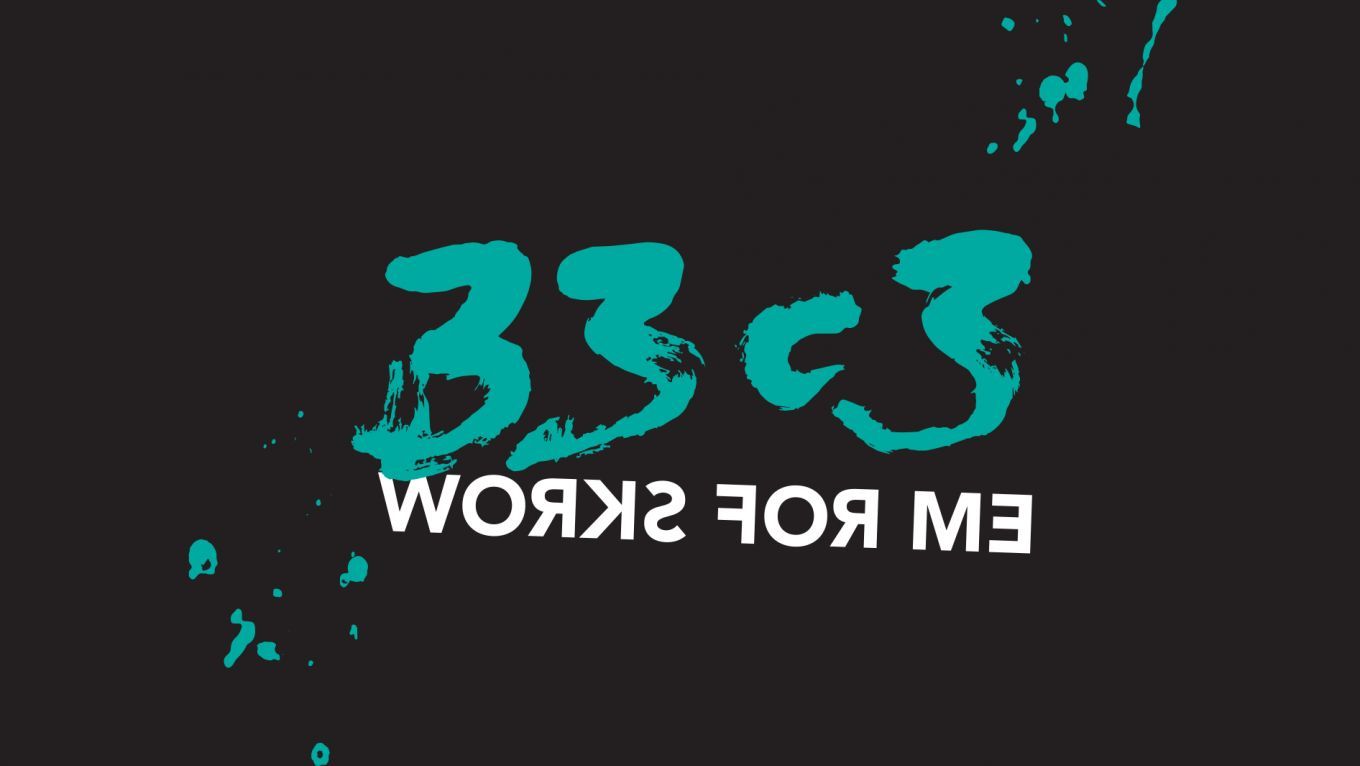Hardware & Making
Hochsicherheits-Generalschlüssel Marke Eigenbau
29. Dezember 2016
18:30 – 19:30 In Kalender übernehmen
18:30 – 19:30 In Kalender übernehmen
Saal G
Die Verfügbarkeit preiswerter Maschinentechnik und Open Source CAD-Software hat den Aufwand des Herstellens eigener mechanischer Schlüssel signifikant abgesenkt, die wir noch vor zehn Jahren als „sicher“ bezeichnet haben.
Klassische Zylinderschlösser sind in der Vergangenheit bereits ausführlich analysiert worden, doch wie sieht die Situation bei anspruchsvolleren mechanischen Schließsystemen aus?
Wir zeigen, wie man den Generalschlüssel einer hoch präzisen, hochpreisigen Schließanlage ermittelt. Weiterhin präsentieren wir unseren Workflow der Software und Mechanik, mit dem man Rohlinge und Schlüssel eines Hochsicherheitssystem mit einer „Low Cost“ CNC-Fräse herstellen kann. Im Gegensatz zum 3D-Drucken bietet uns dies eine deutlich höhere Präzision und mechanische Stabilität - und das für unter 2 Euro pro Schlüssel.
Die Verfügbarkeit preiswerter Maschinentechnik und Open Source CAD-Software hat den Aufwand des Herstellens eigener mechanischer Schlüssel signifikant abgesenkt, die wir noch vor zehn Jahren als „sicher“ bezeichnet haben. Beispielsweise sind CAD-Daten von TSA-Schlüsseln veröffentlicht und mit 3D-Druckern nachgedruckt worden; auf dem 32C3 wurden Tools zur automatisierten Erstellung von Schlüsselrohlingen gezeigt. Klassische Zylinderschlösser sind in der Vergangenheit bereits ausführlich analysiert worden, ebenso die Decodierung einer Schließanlage bis zum 3D-Drucken von geschützten Schlüsselrohlingen anhand eines einfachen Fotos.
Doch wie kann dieses Wissen adaptiert und erweitert werden, um es auch bei anspruchsvolleren Systemen anwenden zu können? Wir zeigen, wie man den Generalschlüssel einer komplexen Schließanlage bestimmt. Als Beispiele dienen EVVA 3KS und KESO. Wir erklären, wie man Schlüssel und Schlösser als Informationsquelle nutzt.
Weiterhin präsentieren wir unseren Workflow der Software und Mechanik, mit dem man Rohlinge und Schlüssel eines Hochsicherheitssystem mit einer „Low Cost“ CNC-Fräse herstellen kann. Im Gegensatz zum 3D-Drucken bietet uns dies eine deutlich höhere Präzision und mechanische Stabilität - und das für unter 2 Euro pro Schlüssel. Als Beispiel zeigen wir, wie man diese Technik an einer mitgebrachten Schließanlage einsetzt.
Weitere Infos
| Format | lecture |
|---|---|
| Sprache | Deutsch |
Weitere Sessions
| 27.12.16 |
<a href="https://outernet.is">Outernet</a> is a company whose goal is to ease worldwide access to internet contents by broadcasting files through geostationary satellites. Most of the software used for Outernet is open source, but the key parts of their receiver are closed source and the protocols and specifications of the signal used are secret. I have been able to <a href="http://destevez.net/tag/outernet/">reverse engineer</a> most of the protocols, and a functional <a ...
|
| 27.12.16 |
Software Defined Radios (SDRs) became a mainstream tool for wireless engineers and security researches and there are plenty of them available on the market. Most if not all SDRs in the affordable price range are using USB2/USB3 as a transport, because of implementation simplicity. While being so popular, USB has limited bandwidth, high latency and is not really suitable for embedded applications. PCIe/miniPCIe is the only widespread bus which is embedded friendly, low latency and high bandwidth ...
|
| 27.12.16 |
The NibbleTronic is a MIDI wind controller that features a novel user interface resulting in a unique tonal range. The standard configuration allows to precisely play a bit more than four full octaves including semitones with only one hand.
|
| 27.12.16 |
Mit steigendem Datenaufkommen und einer immer größer werdenden Zahl von Geräten muss auch das WLAN wachsen. Nach "ur WiFi sucks!!1!" ist dieser Talk eine kleine Einführung in die Neuerungen, welche mit dem 802.11ac-Standard gekommen sind und gibt eine Erklärung, wie sie funktionieren.
|
| 27.12.16 |
"Smart" devices using BTLE, a mobile phone and the Internet are becoming more and more popular. We will be using mechanical and electronic hardware attacks, TLS MitM, BTLE sniffing and App decompilation to show why those devices and their manufacturers aren't always that smart after all. And that even AES128 on top of the BTLE layer doesn't have to mean "unbreakable". Our main target will be electronic locks, but the methods shown apply to many other smart devices as well...
|
| 28.12.16 |
How to get USB running on an ARM microcontroller that has no built in USB hardware. We'll cover electrical requirements, pin assignments, and microcontroller considerations, then move all the way up the stack to creating a bidirectional USB HID communications layer entirely in software.
|
| 28.12.16 |
Yosys is a free and open source Verilog synthesis tool and more. It gained prominence last year because of its role as synthesis tool in the Project IceStorm FOSS Verilog-to-bitstream flow for iCE40 FPGAs. This presentation however dives into the Yosys-SMTBMC formal verification flow that can be used for verifying formal properties using bounded model checks and/or temporal induction.
|

